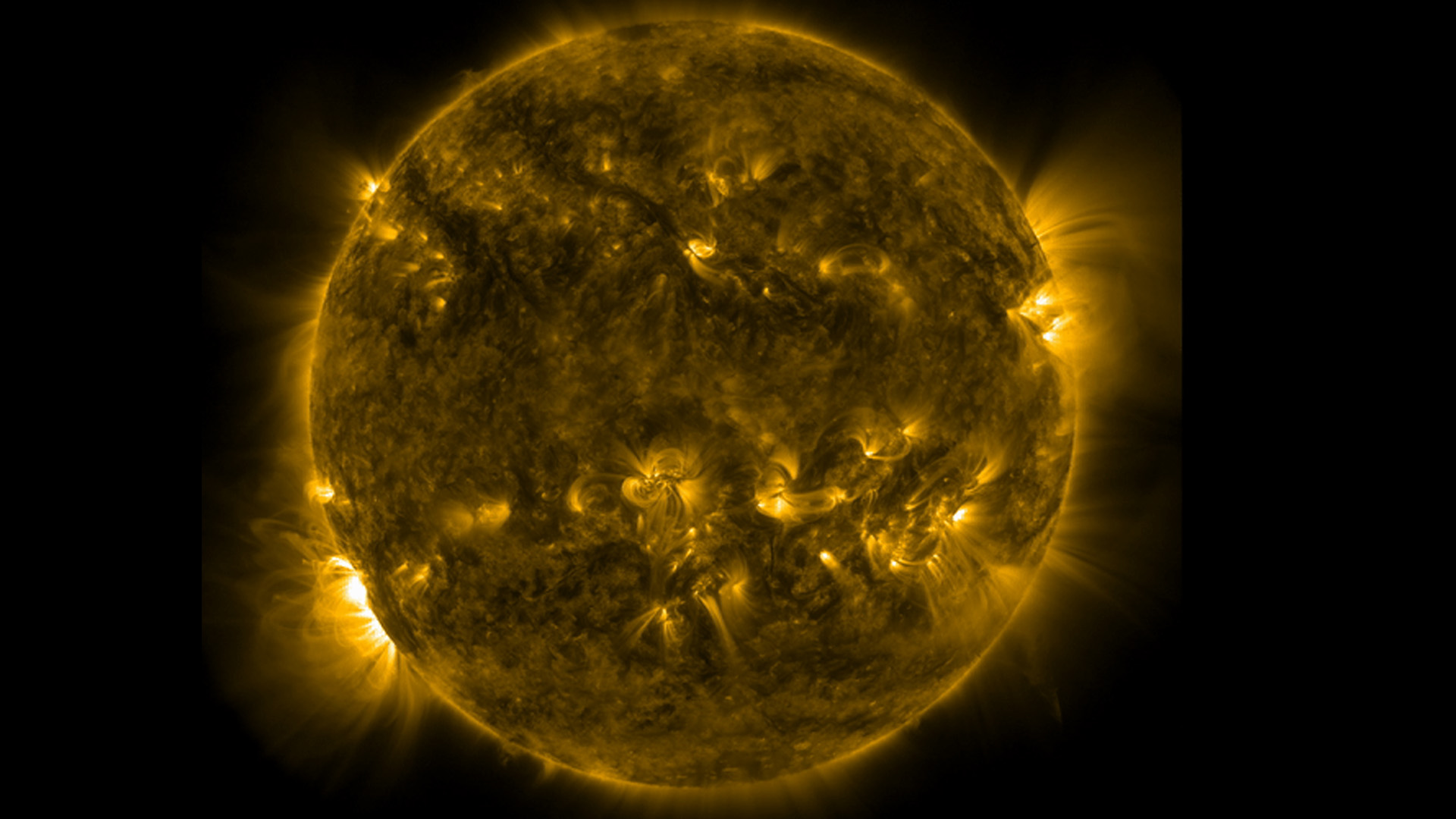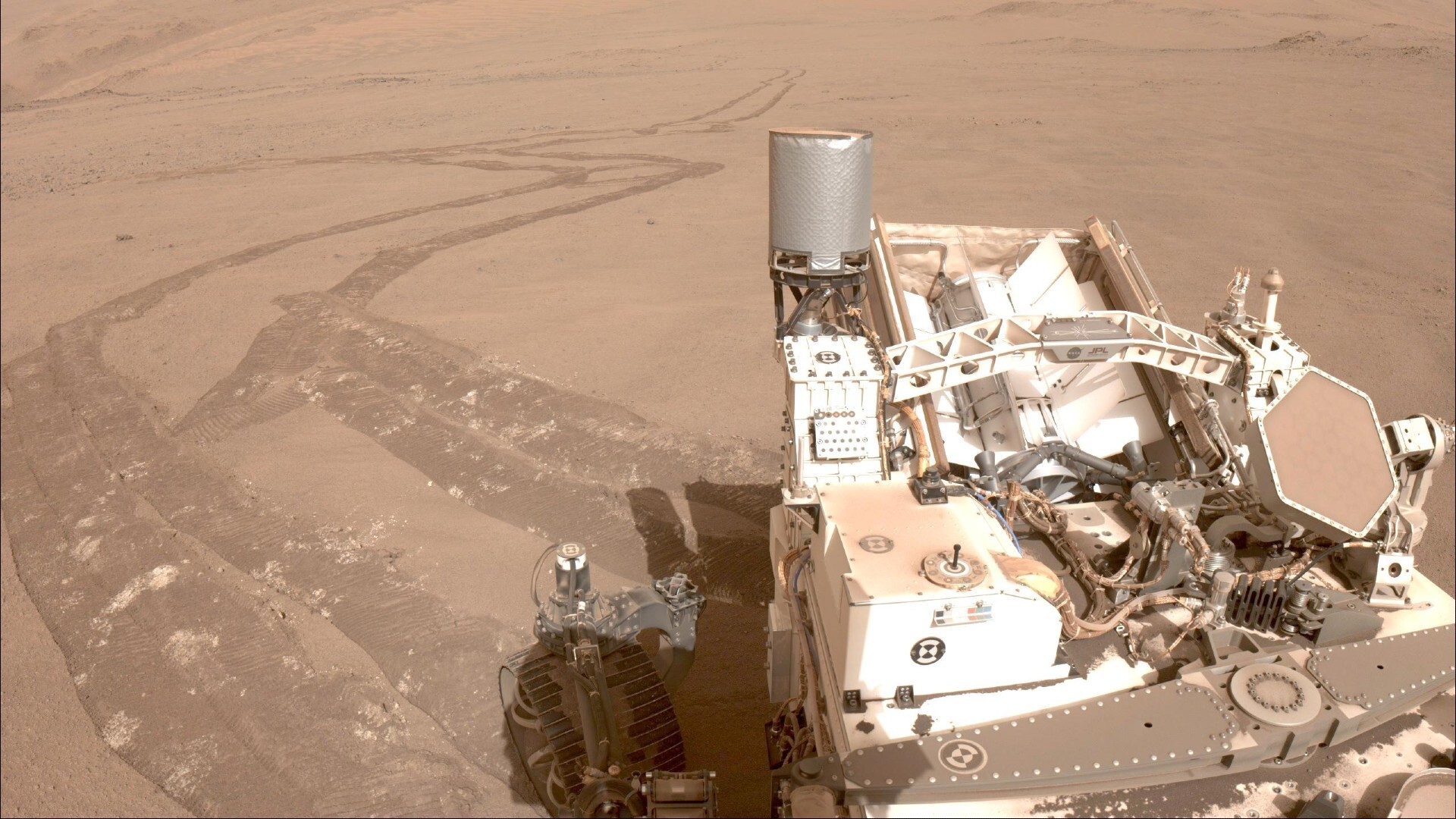Sun fires off huge solar flare from new sunspot coming into view
Auroras are unlikely this time around as the event took place on the limb of the sun.
The active sun fired off a powerful X-class flare, the strongest our star experiences, on Tuesday (May 3), but not in the direction of Earth.
The solar flare peaked at 9:25 a.m. EDT (1325 GMT) and was caught in footage from NASA's Solar Dynamics Observatory, the agency tweeted. No specific guidance about the effects on Earth was discussed, but it is unlikely that auroras will be amplified as this event took place on the lower left limb of the sun.
The flare registered as an X1.1-class solar flare, the second such storm in a week from the sun. A different active region on the sun, which has since turned away from Earth, unleashed an X1.1-class flare on April 30. X-class flares are the most powerful explosions on the sun.
"Solar flares are powerful bursts of radiation," NASA tweeted of the event. "Harmful radiation from a flare cannot pass through Earth’s atmosphere to physically affect humans on the ground, however — when intense enough — they can disturb the atmosphere in the layer where GPS and communications signals travel."
Related: The sun's wrath: Worst solar storms in history
The sunspot from which the flare emerged has not yet been named. "The source is a new unnumbered sunspot emerging over the sun's southeastern limb," SpaceWeather.com said.
Auroras may be amplified after a solar flare when charged particles from a coronal mass ejection erupt from then sun reach the Earth and interact with its upper atmosphere. Providing Earth is in the direction of the outburst, those particles move across our planet's magnetic field lines and excite molecules high in the atmosphere, creating colorful lights.
Breaking space news, the latest updates on rocket launches, skywatching events and more!
The sun was active all through April, displaying huge groups of sunspots while firing off flares ranging from moderate-sized to the largest X-class sized. The sun appears to be waking up as it moves towards its forecasted peak of solar activity in 2025.
NASA and the National Oceanic and Atmospheric Administration are the American government agencies constantly monitoring the sun for its solar weather, to determine effects on Earth and in other places in the solar system. A close-up NASA mission called the Parker Solar Probe is seeking to understand more about the corona, which is the superheated outer atmosphere of the sun.
Follow Elizabeth Howell on Twitter @howellspace. Follow us on Twitter @Spacedotcom or on Facebook.

Elizabeth Howell (she/her), Ph.D., was a staff writer in the spaceflight channel between 2022 and 2024 specializing in Canadian space news. She was contributing writer for Space.com for 10 years from 2012 to 2024. Elizabeth's reporting includes multiple exclusives with the White House, leading world coverage about a lost-and-found space tomato on the International Space Station, witnessing five human spaceflight launches on two continents, flying parabolic, working inside a spacesuit, and participating in a simulated Mars mission. Her latest book, "Why Am I Taller?" (ECW Press, 2022) is co-written with astronaut Dave Williams.

